Asus A8N32-SLI Deluxe: NVIDIA Dual x16 for the Athlon 64
by Wesley Fink on November 6, 2005 9:00 AM EST- Posted in
- Motherboards
Basic Features: Asus A8N32-SLI Deluxe
Yes, this is an Asus board, and not a DFI or Abit. The feature set and adjustments are extremely broad compared to any board. The names of the options are sometimes a little different and the adjustment ranges are often set up differently, but everything that an enthusiast needs to get the most from the Asus A8N32-SLI is here.
| Asus A8N32-SLI Deluxe | |
| CPU Interface | Socket 939 Athlon 64 |
| Chipset | NVIDIA nForce SPP 100 Northbridge NVIDIA nForce4 SLI Southbridge |
| Bus Speeds | 200 to 400MHz in 1MHz Increments |
| Memory Speeds | DDR200, 266, 333, 366, 400 (433, 466, 500 with Rev. E AMD) |
| PCIe Speeds | 100-200MHz on 1MHz Increments |
| NB to SB Frequency | 200-300MHz in 1MHz increments |
| PEG Link Mode | Auto, Disabled, Normal, Fast, Faster |
| PCI/AGP | Fixed at 33/66 |
| Core Voltage | Auto, 1.0V to 1.5625V in 0.0125V increments PLUS 0.2V in vCore Boost (Maximum vCore 1.7625V) |
| CPU Clock Multiplier | 4x-25x in 0.5X increments |
| DRAM Voltage | Auto, 2.6V to 3.2V in .05v increments |
| HyperTransport Frequency | 1000MHz (1GHz) |
| HyperTransport Multiplier | Auto, 200MHz to 1600MHz in 200MHz increments |
| SB to NB Frequency | 200MHz to 1600MHz in 200MHz increments |
| HyperTransport (LDT) Voltage | Normal, +0.2V |
| Northbridge Voltage | Normal, +0.2V |
| Southbridge Voltage | Normal, +0.2V |
| Memory Slots | Four 184-pin DDR DIMM Slots Dual-Channel Configuration Regular Unbuffered Memory to 4GB Total |
| Expansion Slots | 2 PCIe x16 1 PCIe x4 3 PCI Slots |
| SLI | Full Dual x16 SLI |
| Onboard SATA/RAID | 4 SATA2 Drives by nF4 (RAID 0, 1, JBOD) PLUS 2 SATA2 Drives by Sil 3132 |
| Onboard IDE/IDE RAID | Two Standard ATA133/100/66 (4 drives) |
| Onboard USB 2.0/IEEE-1394 | 10 USB 2.0 Ports by nF4 (9 on Wi-Fi model) 2 1394A Ports by TiTI |
| Onboard LAN | 2 Gigabit Ethernet PCIe Ethernet by Marvell 88E1111 PHY, Marvell 88E8053 PLUS Wireless LAN 54 Mbps on WiFi Model |
| Onboard Audio | AC '97 Realtek ALC850Codec 8-Channel Audio with 6 Auto-Sense Jacks Coaxial and Digital SPDIF on back IO |
| BIOS Revision | AMI 0301 (9/30/05) |
Yes, this is an Asus board, and not a DFI or Abit. The feature set and adjustments are extremely broad compared to any board. The names of the options are sometimes a little different and the adjustment ranges are often set up differently, but everything that an enthusiast needs to get the most from the Asus A8N32-SLI is here.
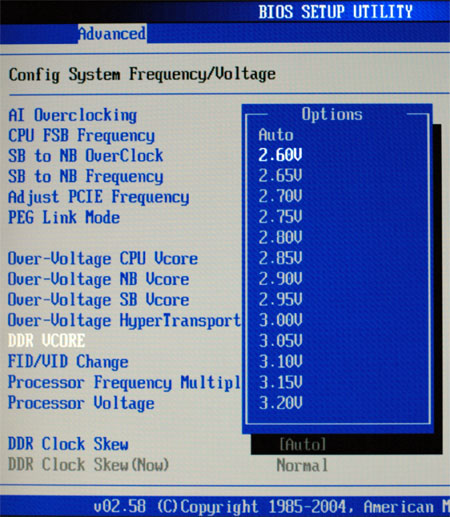
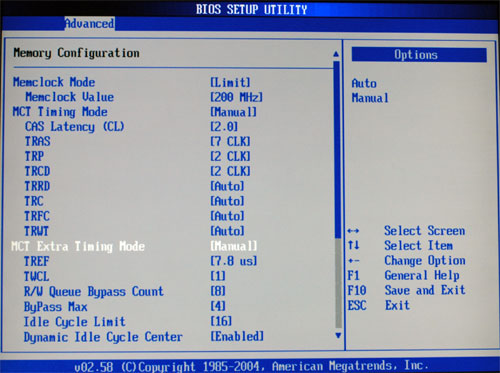
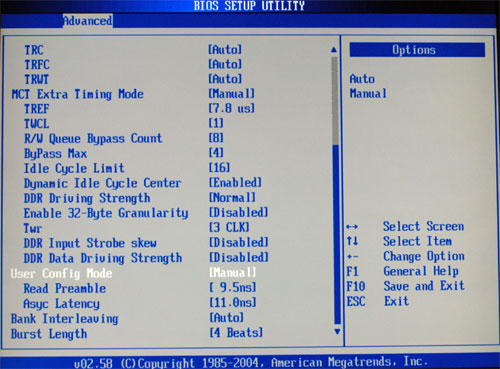
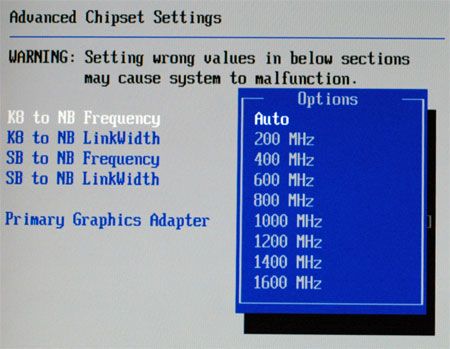
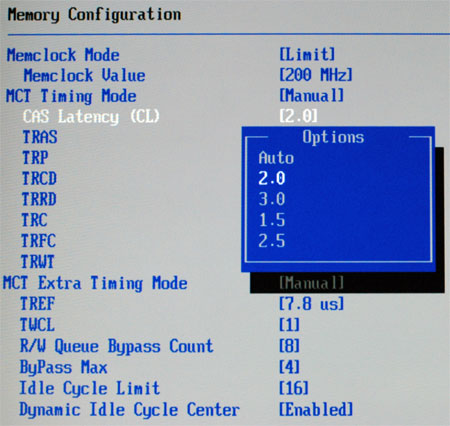










95 Comments
View All Comments
Marlin1975 - Friday, November 4, 2005 - link
That can not be stressed enough. I don't mind paying a couple extra bucks to get a nice VIA Envy sound or even the new C-media Dolby chip. But the ac97 realtek junk needs to die.
phusg - Friday, November 4, 2005 - link
Agreed. Only it's even worse: nVidia pioneered decent on-board sound with their nForce1 chipset (not nForce2).
Concillian - Friday, November 4, 2005 - link
I definitely agree, and don't think this was mentioned in the 'Final Words'.With lack of PCI-e support from soundcards and many other add-in cards, it's important to minimize add-in cards, especially on an SLI setup where slots may be eaten up by coolers for the 2 video cards.
With the way this board is layed out, if you have 2 cards in SLI with big coolers you have 1 PCI and 1 x4 PCI-e slot left. If you're forced to populate the PCI slot with a soundcard you're done... seeing as how there are very few PCI-e cards out there.
I would also not be blaming nVidia... ASUS could implement a better audio solution if they wanted to (like DFI does with Karajan and MSI does with SBLive!), but they chose not to. To blame nVidia seemingly absolves ASUS of responsibility, and that's not right. The board is made by ASUS, not nVidia. Any blame for a poor audio implementation belongs to ASUS.
nVidia supposedly had little demand for soundstorm because motherboard manufacturers weren't ordering enough. At least that's the story that was fed to us. Giving specific manufacturer designs poor ratings because of crappy audio implementation is the way to get manufacturers to implement better solutions regardless of what their supplier gives them. Blaming their supplier gives them a cop out. Blaming ASUS gets them looking for innovative solutions and asking nVidia to supply them with better options integrated into future chipsets.
phusg - Friday, November 4, 2005 - link
Also the motherboard manufacturers complained at the high cost of the Dolby Digital Live licence (something like $5 a chipset if I remember rightly). I've always said nVidia should go have a chat with the competitors DTS. Wouldn't that be something?
DanaGoyette - Friday, November 4, 2005 - link
I've been pondering this for a while:Since the nForce4 x16 northbridge uses Hypertransport to communicate with its southbridge,
and the nForce2 southbridge uses HyperTransport to communicate with its northbridge,
Shouldn't it be possible to replace or supplement the nForce4 southbridge with the nForce2 MCP-T and use its APU? Either that, or combine it with the nForce Professional MCPe?
Even better, use the nForce2 MCP-T with the GeForce 6100/6150 northbridge for integrated audio and video!
psychobriggsy - Friday, November 4, 2005 - link
It all depends on whether the southbridge used (a standard nForce4 SLI) has a downstream HyperTransport link.I imagine it doesn't, therefore you have: [CPU]===[nF SP100]===[nF SLI]
I suppose you could connect an ULi PCIe southbridge to a couple of spare PCIe lanes for it's built in Azalia audio, and another bazillion SATA ports, IDE ports and USB ports, lol.
DanaGoyette - Friday, November 4, 2005 - link
Er, I didn't mean nForce Professional AND nf4 with the MCP-T, I meant one or the other. I wonder if it's even possible to use the NF2 southbridge like this. I believe the BIOS might take some work, but you never know until you try![CPU] - [nF Pro] - [NF2 MCP-T]
[CPU] - [SLIx16] - [NF2 MCP-T]
[CPU] - [gf6100] - [NF2 MCP-T]
yacoub - Friday, November 4, 2005 - link
This board is definitely on my list to track pricing. If this thing comes down enough I'll be getting this when I build my new system instead of the older Asus SLI-Premium I was looking at.Hopefully Asus soon releases that sweet passively-cooled 7800series card (hopefully a GT) as well. It debuted in this article: http://www.anandtech.com/tradeshows/showdoc.aspx?i...">http://www.anandtech.com/tradeshows/showdoc.aspx?i...
yacoub - Friday, November 4, 2005 - link
Can you mount an XP-90 on the processor without interfering with the heatpipes or MOSFETs around the socket?yacoub - Friday, November 4, 2005 - link
Did you guys test any of the aftermarket cooling systems like the XP90 and XP120 for clearance? That's rather important to overclockers, especially on a board like this!